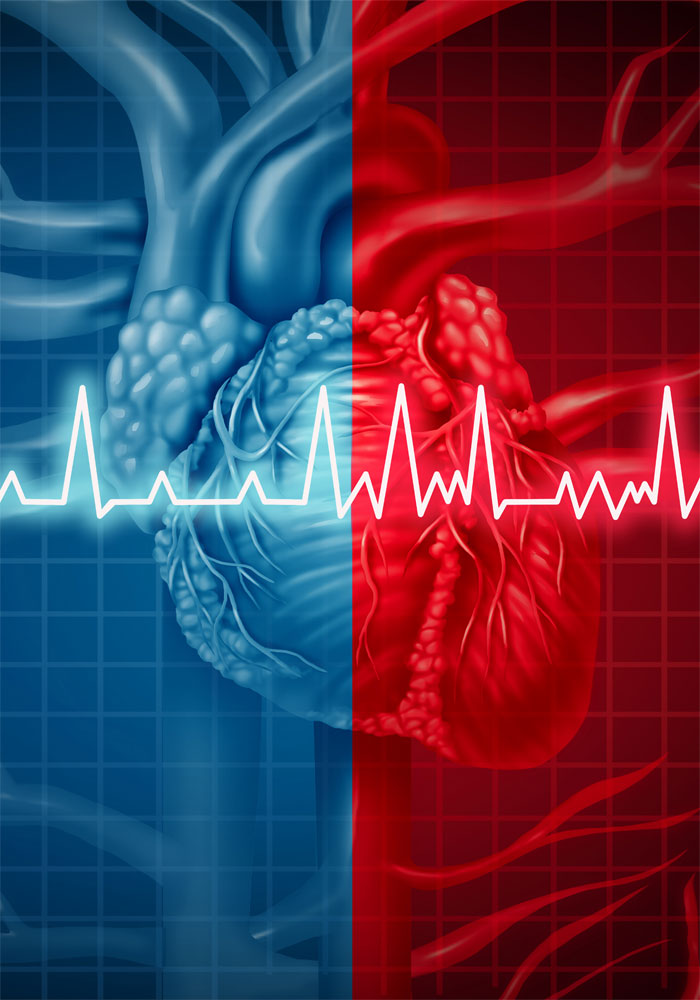ATRIAL FIBRILLATION

ATRIAL FIBRILLATION
Atrial fibrillation is an arrhythmia of the atria. In a patient with atrial fibrillation the electrical activity of the atria of the heart instead of being organized becomes chaotic and thus the atrial contraction is eliminated. Atrial fibrillation represents the most common arrhtymia in the western worlο -it is estimated that one in three patients over the age of 55 are at risk- and has been classified as a modern pandemic.
Atrial Fibrillation clinical presentation may be highly variant: may be completely asymptomatic but may also present as cardiogenic shock. The severity of its manifestations depends on the particular characteristics of each patient (anatomical and functional substrate).
A simple way to timely recognize Atrial Fibrillation is the self-palpation of the coronary artery – near the wrist. If the patient feels that the pulse is not rhythmic it is advisable to consult a cardiologist for further investigation. Final diagnosis is made with an electrocardiogram.
The most dreadful complications of atrial fibrillation are thrombotic events including ischemic stroke which may cause transient or permanent disability. It is estimated that 20-30% of all ischemic strokes are due to atrial fibrillation. Further, atrial fibrillation is associated with an increased risk of death (1.5-3.5 times), increased risk of heart failure (20-30% of patients with atrial fibrillation), increased risk of depression, and decreased quality of life.
Therapeutic targets include both reducing the risk of stroke and improving the overall prognosis as well as improving the patient’s symptoms.
Anticoagulants are administered to prevent ischemic strokes. The main side effect of anticoagulants is an increase in bleeding events. Therefore, anticoagulants are administered to those in whom the balance between ischemic stroke risk vs. the risks from medication per se is in favor of drug treatment. For this purpose, cardiologists utilize special risk scores – which are re-evaluated on a regular basis.
When it comes to treatment, the cardiologist has to choose between a so-called rhythm or frequency control strategy.
In the first, the therapeutic approach aims to restore patient’s rhythm to sinus rhythm, that is, to get rid of atrial fibrillation. This may be achieced either with the administration of antiarrhythmic drugs or with interventional procedures called ablation procedures (pulmonary vein isolation). Ablation procedures have gained ground lately, since they have been shown to be safe and do not bear the side effects of antiarrhythmic drugs (the so-called proarrhythmic effect).
Frequency control strategies refer mainly to medications in order to urge the heart beat with slower frequency (ie reduce heart rate) resulting in fewer patient symptoms – especially in the presence of valvular disease or reduced systolic function. As a rule the target heart rate is less than 110 beats per minute.
The choice between the two strategies is a subject of wide scientific discussion and clinical studies. Maintaining a sinus rhythm has largely been shown to benefit the patient, but the cost of antiarrhythmic therapy to achieve this with medication is just as high. Atrial Fibrillation ablation promises to overcome, at least in part, this problem.
In addition, we do know that “atrial fibrillation begets atrial fibrillation”. Simply put, the longer atrial fibrillation induces changes in atrial myocardium (electro-anatomical changes) and this in turn is more prone to atrial fibrillation.
Therefore, the earlier we intervene in its course, the more likely we are to get rid of it or to significantly reduce its “burden”. However, there are cases, especially in elderly patients, in whom it may be wiser to choose the conservative option, ie the frequency strategy. The final choice is a mutual decision of the doctor and the patient, after discussion potential risks and benefits.
It is important to note that to date, neither approach relieves the patient of the need for anticoagulants.
Today, the medical community accepts that atrial fibrillation treatment should perceive the patient as a whole and not as a lone arrhythmia. This means that all traditional risk factors must be treated along with the arrhythmia. Additionally, interventions must be taken care regarding healthy diet (weight loss, reduction of alcohol consumption, exercise) and psychosocial support (interventions for training or patient support).
